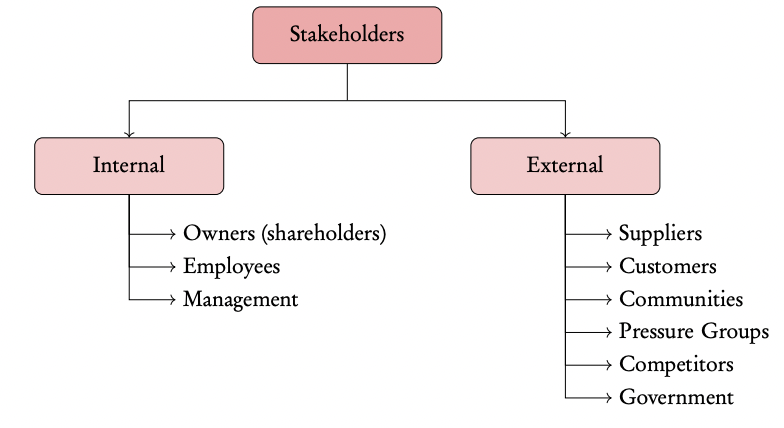IB Business Management SL - 1.3. Organizational objectives
0.0(0)
0.0(0)
Card Sorting
1/19
Earn XP
Description and Tags
Study Analytics
Name | Mastery | Learn | Test | Matching | Spaced |
|---|
No study sessions yet.
20 Terms
1
New cards
Business aims
They define the firm’s purpose and long-term goals, often expressed in the mission statement
2
New cards
Business objectives
Clearly defined and measurable targets on how to achieve the business’ aims, often expressed as SMART.
3
New cards
SMART objectives
Specific: target a specific area for improvement.
Measurable: quantify and indicator of progress to judge if the objective has been achieved.
Agreed upon
Realistic
Time-constrained: specify the time period
Measurable: quantify and indicator of progress to judge if the objective has been achieved.
Agreed upon
Realistic
Time-constrained: specify the time period
4
New cards
Strategic objectives
The senior leadership sets long-term goals. Affects the whole company.
5
New cards
Tactical objectives
Middle management develops medium-term action plans. Affects departments.
6
New cards
Operational objectives
Lower management develops short-term action plans. Affects teams.
7
New cards
Mission statement
Specifies the aims and objectives of the business in the present. Describes core activities, moral and ethical issues, etc.
8
New cards
Vision statements
Specifies the long term aspirations of a business, and describes how the organization wants to be perceived.
9
New cards
Corporate social responsibility
The consideration of ethical and environmental issues relating to the business activity.
10
New cards
Stakeholders
Individuals or groups that may hold interest in the business or may be affected by its decisions

11
New cards
Internal stakeholders
Directly involved in running the business. Shareholders, directos and senior management, employees.
12
New cards
External stakeholders
Simply affected or interested in the activities of the business. Suppliers, customers, communities, pressure groups, competitors, and government.
13
New cards
External factors
Outside influences that can impact a business, such as laws, market trend, or political changes.
14
New cards
SWOT analysis
Aims to identify the key internal strength and weaknesses, and external opportunities and threats.
15
New cards
PEST analysis
Evaluates opportunities and threats on Political, Economic, Social, and Technological Factors.
16
New cards
STEEPLE analysis
The same analysis as PEST, but also includes Legal, Environmental and Ethical considerations
17
New cards
Growth strategy
Should be adopted when the company believes it doesn't have weaknesses in other areas. In the quadrant of strength and opportunities
18
New cards
Altruistic attitude
the company genuinely does it for social benefits, they actually care about the impact of the company
19
New cards
Strategic attitude
businesses ought to be socially responsible only if such actions help them to become more profitable.
20
New cards
Self-interest attitude